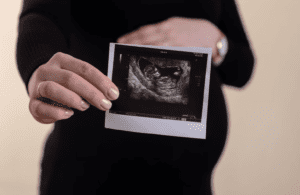Although the Fukushima disaster in Japan is the most memorable case of adverse radiation in Asia and the world, there are budding cases of hazardous radiation across several counties in Asia.
Despite the rise in radiation from mobile phones and other smart devices, there is no acclaimed or unified organization consisting of Asian countries to take a stand. Nevertheless, some Asian countries already possess functioning bodies that enact guidelines that have helped regulate EMF exposure. For countries without their national EMF organization, they are expected to obey the guidelines of international bodies like WHO and ICNRCP.
EMF Regulating bodies in Asian Countries
There are notable Asian countries with developed EMF organizations, and amongst the many include:
China
Due to China’s vast landmass and massive population, it thankfully has numerous organizations and government agencies that monitor, contribute, investigate, and perform research on EMF radiation regulation. Many of these organizations are focused mainly on the biological effects of EMF on the environment and possibly on the population’s health.
The official organization for EMF regulation in China is the Ministry of Ecology and Environment of the People’s Republic of China (formerly Ministry of Environmental Protection of China) which is responsible for regulating the policies for EMF radiation emission and safety for the general public.
Although different China corporations follow their unique set of rules as regards the exposure and emission of EMF, the Ministry of Ecology and Environment of the People’s Republic of China (formerly Ministry of Environmental Protection of China) has set two major policies that all corporations must follow in China.
These two mandatory policies are the Ministry of Health’s GB 8702-88 and the Ministry of Environmental Protection’s GB 21288. These limitations are based upon the international ICNIRP regulations for SAR (Specific own limits regarding Exposure Limits.
Japan
In Japan, the Ministry of Internal Affairs and Communications (MIC) is the main regulator of telecommunications and overviews many areas regarding radio/telecommunications and thus regulates the radiofrequency level in Japan. The organization is Subdivided into different divisions like policy, safety, communications, and monitoring to help them focus on different areas properly.
Japan has no official laws guiding the safety and protection of their citizens against EMF exposure, but they have specific guidelines for the limitations of EMF exposure called the Radio Radiation Protection Guidelines for Human Exposure to Electromagnetic Fields (RRPG).
Japan’s Ministry of Internal Affairs and Communications (MIC) has also embarked on a few research to change some of their old policies and then renewed them to match with the international guidelines of ICNIRP. The MIC has also researched and analyzed the various mobile phone frequency and usage patterns and gauged them with people’s health to study the biological effects of THz radiation exposure and the frequency dependency of its sensitivity.
South Korea
The Ministry of Science and ICT (MSIT) is the regulatory body responsible for managing EMF regulations and standards. Other institutes also assist the Ministry with studies and research, and one of these institutions is the National Radio Research Agency (RRA).
Together, these organizations work hand-in-hand to promote a safe radio wave environment across Korea. In Korea, the EMF policy and radiofrequency regulation are under Korea’s Radio Waves Act.
The Radio Waves Act was designed to promote safe radio waves and contribute to the advancement of safe EMF emissions to the general public. Article 47 of the Radio Wave Act, states that all radio facilities shall be installed and modified following safety guidelines ensuring safety and protection from EMF exposure.
Clause 1 of Article 47-2, the Ministry of Science and ICT (MSIT) must set a limitation on EMF emissions to protect the human body and manage the measurements method of SAR, electromagnetic fields emitted, and the devices used. Clause 2 targets producers and manufacturers along with the installer and states the radio facilities must comply. Clause 3 further ensures that the radio station owners must report an evaluation of the EMF level radiated to MSIT. Misconduct to this compliance will cause MSIT to invade the radio’s privacy by directing the radio facility to install a safety facility to restrict or check operations.
Korea’s SAR Limit
Clause 6 talks about the EMF exposure limits of SAR in Korea and how they are referred to the international standards developed by IEEE (FCC guideline). Korea’s SAR Limit has been enforced as an optional guideline until Dec. 2012 and in January 2013, the SAR limits for workers and body, limbs, and whole-body average were adopted and effective.
Nepal
Nepal’s EMF regulating body is the Nepal Telecommunications Authority (NTA). All EMF standards and assessments are all enforced, amended, and applied by NTA as it serves the biggest role in the development/ regulation of the telecommunications service in Nepal.
It is the decision-maker behind the government on radio frequency safety regulations and emission policy, although it is poorly developed as compared to other EMF regulation agencies in Asia and the world at large. The Nepalese government believes that telecommunication services are an essential tool for future development and has accorded it the market rights to collaborate with the private sector.
Recently they have developed new laws and policies under the codename “NTA 2010 Guidelines on Infrastructure” to reform the use of infrastructure and other radiation devices in the Kingdom. In regards to exposure limits and their protection for the general public, Nepal uses the ICNIRP regulations for both SAR and Exposure Limits. Also, the Ministry of Physical Planning and Works and corporations can place restrictions on radio stations/ towers if they pose a health hazard to the general public.







